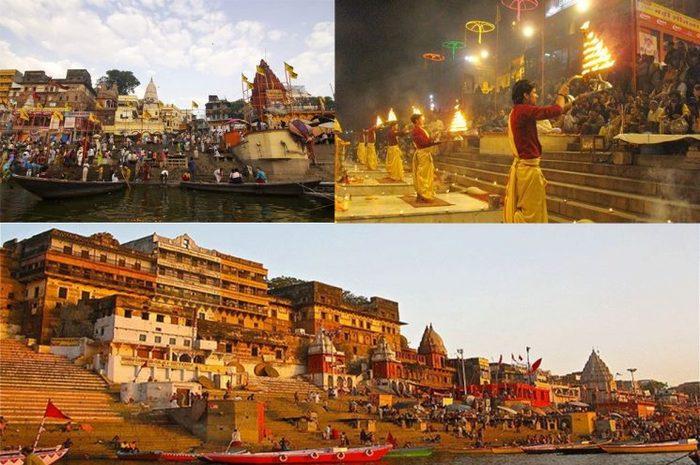7Days exploration of religion from Varanasi
Varanasi-Varanasi(1N)--Varanasi(1N)--Gaya(1N)--Rajgir(0N)--Patna(1N)--Kushinagar(1N)--Ayodhya(1N)--Varanasi(0N)--7D

Enjoy a 7 days religious trip from Varanasi.Explore Sarnath - one of the holiest places for Buddhists. Experience the spiritual Ganga Aarti, Visit Ram Janmabhoomi & much more.
Gaya:
Gaya is a city of ancient historical and mythological significance. It is one of the major tourist attractions of Bihar. The city is the 2nd largest city of Bihar, and is also the headquarters of Gaya district and Magadh division. Gaya is one such place that is close to the heart of those who follow Hinduism, Jainism and Buddhism.Gaya finds mention in the great epics, Ramayana and Mahabharata.Situated on the banks of the Phalgu River.Gaya derives its name from the mythological demon Gayasur (which literally means Gaya the demon). According to Vayu Purana, Gaya was the name of a demon (Asura) whose body was pious after he performed rigid penance and secured blessings from Vishnu. Gaya is the second biggest economy in Bihar, after Patna. It has a large number of household industries like production of agarbattis, production of tilkut and lai, stone crafting, power looms,etc.Gaya functions as a service centre for the surrounding towns and villages. Commercial activities are located along the important roads of the town.Gaya has the highest number of hotels in Bihar & Jharkhand. Climate is characterised by relatively high temperatures and evenly distributed precipitation throughout the year.
Varanasi:
Varanasi also known as Benares, Banaras, or Kashi, is a city on the banks of the Ganges in Uttar Prades, North India, 320 kilometres south-east of the state capital, Lucknow, and 121 kilometres east of Allahabad. The spiritual capital of India, it is the holiest of the seven sacred city in Hinduism and Jianism, and played an important role in the development of Buddhism. Varanasi lies along National Highway 2, which connects it to Kolkata,Kanpur, Agra, and Delhi. Varanasi grew as an important industrial centre, famous for its muslin and silk fabrics, perfumes, ivory works, and sculpture. Buddha is believed to have founded Buddhism here around 528 BC when he gave his first sermon, "The Setting in Motion of the Wheel of Dharma", at nearby Sarnath. The city's religious importance continued to grow in the 8th century, when Adi Shankara established the worship of Shiva as an official sector of Varanasi. Despite the Muslim rule, Varanasi remained the centre of activity for Hindu intellectuals and theologians during the Middle Ages, which further contributed to its reputation as a cultural centre of religion and education. Tulsidas wrote his epic poem on Rama's life called Ram Charit Manas in Varanasi. In the 16th century, Varanasi experienced a cultural revival under the Muslim Mughal emperor Akbar who invested in the city, and built two large temples dedicated to Shiva and Vishnu, though much of modern Varanasi was built during the 18th century, by the Maratha and Bhumihar kings. The kingdom of Benares was given official status by the Mughals in 1737, and continued as a dynasty-governed area until Indian independence in 1947. The city is governed by the Varanasi Nagar Nigam(Municipal Corporation). Major attractions to this city are:- • Jantar Mantar • Ramnagar Fort • Dashashwamedh Ghat • Manikarnika Ghat • Jain Ghat or Bachraj Ghat • Kashi Viswanath Temple • Sankat Mochan Hanuman Temple • Parshuanath Jain Temple • Shri Guru Ravidas Janam Asthan
Ayodhya:
Ayodhya, also known as Saket, is an ancient city of India, believed to be the birthplace of Rama and setting of the epic Ramayana. It is adjacent to Faizabad city at the south end in the Indian state of Uttar Pradesh